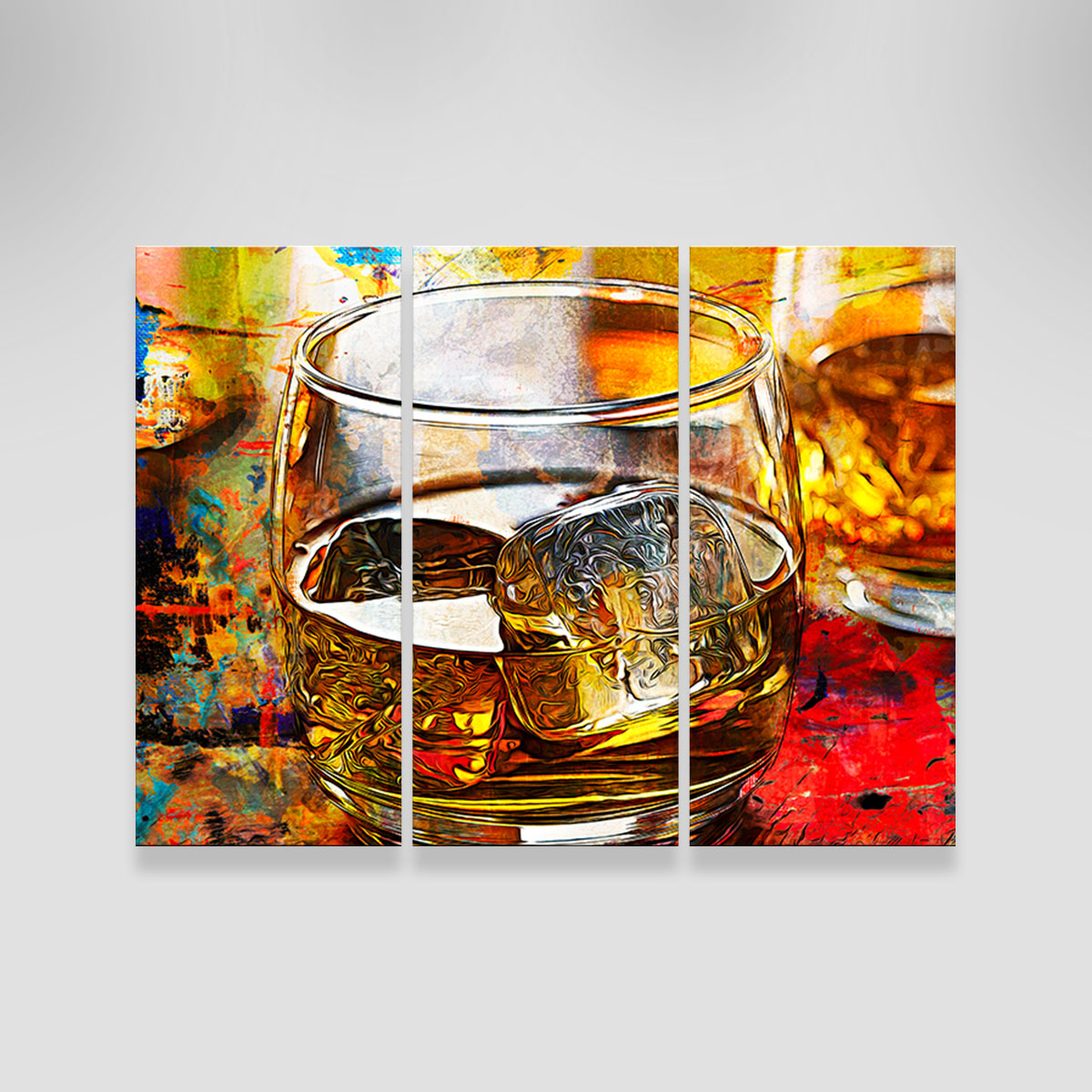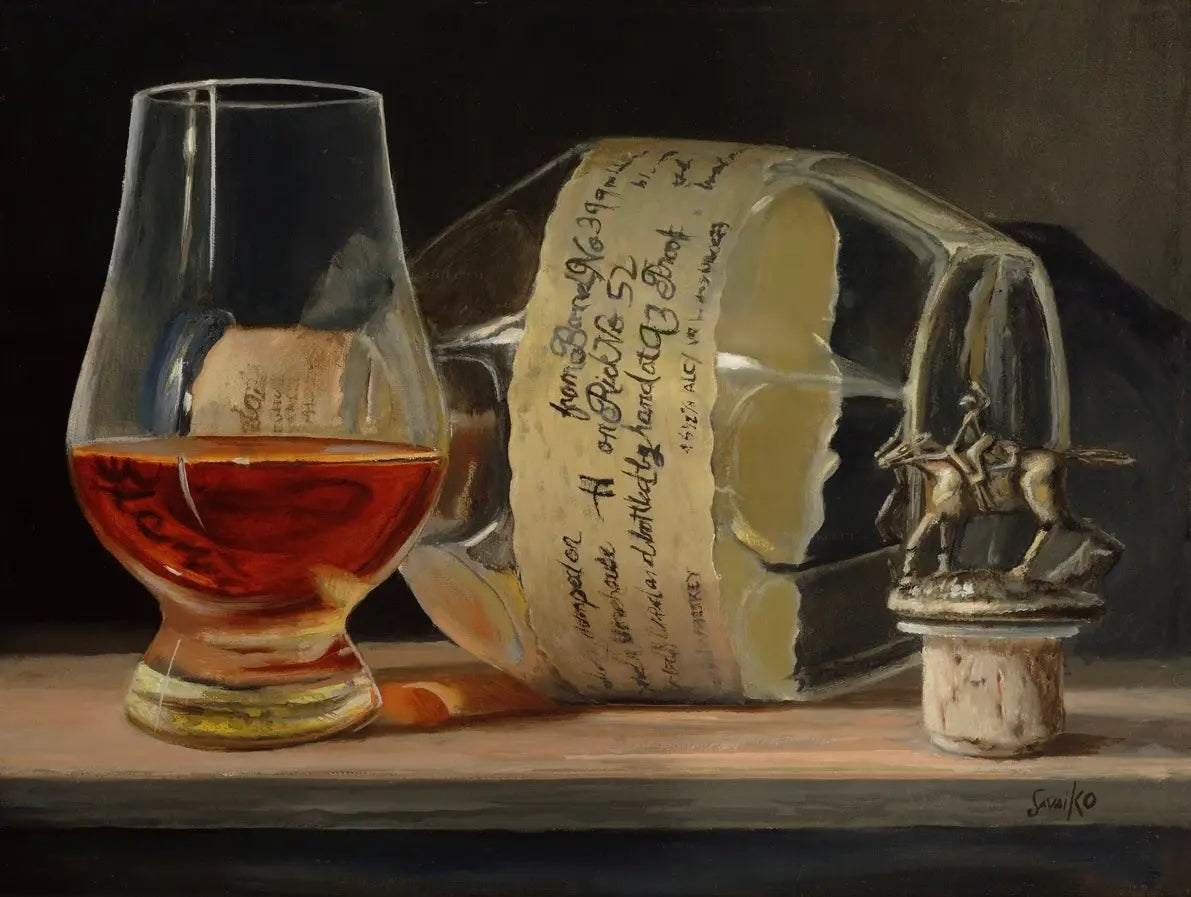Realism Art in the Whiskey Sector: Illustrating Moments of Distillation
Realism Art in the Whiskey Sector: Illustrating Moments of Distillation
Blog Article
The Importance of Whiskey Art in Celebrating Heritage and Craftsmanship in the Beverage Sector
The elaborate connection between scotch art and the celebration of heritage and craftsmanship within the beverage market can not be overstated. Via attentively designed labels and containers, bourbon brand names envelop their historic roots and the artisanal skills that specify their production methods.
The Historic Roots of Whiskey
At the heart of whiskey's allure exists an abundant tapestry of historical origins that trace back to old human beings. The beginnings of bourbon can be linked to the purification methods of the Sumerians and Babylonians around 2000 BCE, where early kinds of fermented grain drinks began to arise. It was in the Center Ages that the art of distillation evolved substantially, particularly in Ireland and Scotland, leading to the production of whiskey as we recognize it today.
The term "whiskey" itself originates from the Gaelic word "uisce beatha," suggesting "water of life." This expression underscores the social importance of whiskey in Celtic cultures, where it was typically connected with routines, events, and public bonding. By the 15th century, distillation ended up being an identified craft within reclusive communities, leading the way for the establishment of lawful distilleries.
As trade courses increased, scotch's popularity grew, transcending local boundaries and capturing the interest of connoisseurs worldwide. Realism Art. This historical trip reflects not just the workmanship behind scotch manufacturing but likewise its indispensable duty in cultural and social contexts, noting it as a significant beverage throughout background
Artistic Expression in Branding
Scotch branding stands as an engaging junction of virtuosity and business, where visual identification plays an essential function in shaping customer understanding. The appearances of bourbon labels, product packaging, and marketing products show not just the brand name's tale yet additionally its core worths and heritage. Via imaginative expression, distilleries communicate a story that reverberates with consumers, stimulating feelings and stimulating connections.
The use of shade, typography, and images in branding offers to distinguish items in a saturated market. As an example, typical themes might evoke a sense of credibility and craftsmanship, while contemporary layouts can indicate technology and forward-thinking. This calculated creative direction boosts brand recognition and commitment, enabling consumers to create an individual partnership with the whiskey they select.
Furthermore, creative expression in branding frequently functions as a celebration of local heritage. Distilleries regularly incorporate neighborhood symbols or historic recommendations into their designs, developing a local color that welcomes consumers to participate in a more comprehensive cultural experience. Ultimately, the virtuosity behind scotch branding not just boosts aesthetic charm but additionally improves the overall narrative of the brand, fostering a much deeper gratitude for the craftsmanship and heritage ingrained in each container.
Workmanship in Bottle Design
The virtuosity apparent in bourbon branding expands beyond visual identification to include the craftsmanship included in container style. Each container offers as a vessel not simply for the spirit within, yet additionally for the tale it outlines its tradition, top quality, and beginning. The design procedure calls for precise attention to detail, as aspects such as product, form, and closure contribute substantially to the total perception of the bourbon.
Workmanship in bottle design entails selecting high-quality glass that can enhance the whiskey's shade and quality, while additionally supplying a tactile experience for the consumer. The silhouette of the container need to be both aesthetically appealing and functional, typically mirroring the heritage of the brand. Numerous distilleries select one-of-a-kind forms or embossed logos that evoke a feeling of authenticity and background.
Furthermore, the tag design and typography play a vital function in connecting the brand's narrative. Bourbon Art. A well-crafted bottle not just captivates the customer's eye yet additionally enhances the brand's commitment to high quality and custom. This way, the craftsmanship of container style comes to be an important aspect of the whiskey experience, combining virtuosity with a profound respect for heritage
Cultural Relevance of Scotch Art
Celebrating practice and craftsmanship, the cultural significance of scotch art goes beyond mere visual appeals, linking with the social and historic narratives of the areas where it comes from. Each container works as a canvas, showing the unique tales, mythology, and customs that have actually shaped neighborhood whiskey-making practices. The detailed designs often show the heritage of the distillers, incorporating signs and motifs that Website reverberate with the culture and worths of their neighborhoods.

Furthermore, bourbon art plays an important duty in communal events and events, working as a substantial link in between individuals and their shared experiences. By valuing the virtuosity in bourbon packaging, customers cultivate a deeper understanding and regard for the craft, eventually enhancing their pleasure of the beverage itself.
Modern Trends in Bourbon Presentation
In recent times, the discussion of scotch has progressed to reflect contemporary preferences and trends while still honoring conventional craftsmanship - Realism Art. Distilleries are increasingly concentrating on aesthetic aspects that enhance the overall drinking experience, connecting the gap in between heritage and modernity
Innovative bottle styles have arised, usually incorporating lasting products and artistic labels that inform compelling stories. Many brands now collaborate with regional musicians, instilling their products with distinct visual expressions that resonate with customers. Additionally, limited-edition launches are commonly packaged in collectible containers, including value and allure for connoisseurs.

Conclusion
Finally, bourbon art works as a crucial avenue for sharing the heritage and workmanship fundamental in the drink sector. With complex branding, ingenious container designs, and culturally considerable creative elements, whiskey brand names effectively honor their practices and attach with customers. This creative narrative not just elevates the appreciation of whiskey but additionally enhances neighborhood identification and pride among manufacturers. Eventually, whiskey art plays an essential function in preserving and celebrating the abundant cultural tapestry of whiskey-making.


Craftsmanship in container layout includes selecting top quality glass that can boost the whiskey's shade and clearness, while likewise providing a responsive experience for home the customer. In this means, the craftsmanship of bottle layout ends up being a crucial aspect of the scotch experience, merging creativity with a profound respect for heritage.
In conclusion, whiskey art serves as an important channel for sharing the heritage and craftsmanship intrinsic in the drink market.
Report this page